Ceiling lamps in the bathroom: varieties, brands and choices
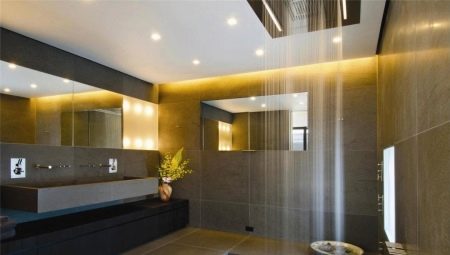
Correctly installed fixtures help to add flavor to any room. The bathroom is the area where you want to relax and wash away the fatigue from a hard day. The presence of a window is not always provided there, so lamps help to create the right atmosphere.
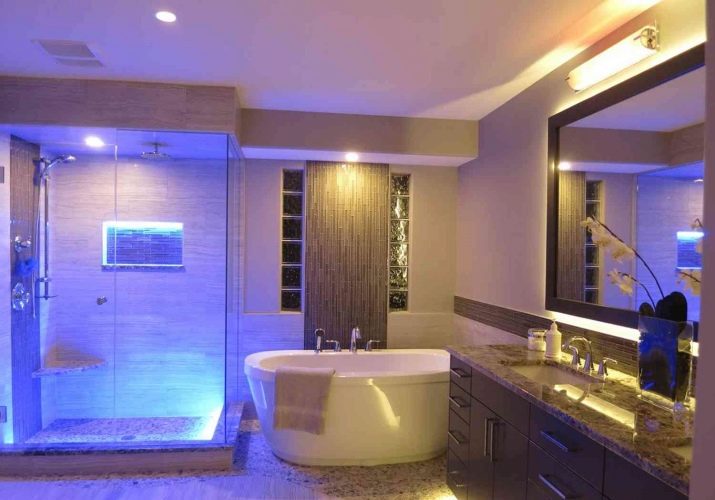
Peculiarities
Lighting can be varied both with conventional lamps and installed in the ceiling. Designers use this to delimit space into zones.
The illuminated mirror makes your beauty treatments or shaving more comfortable. The shower stall, if used instead of a bath, has its own lighting. In the rest of the space, lamps are installed on the walls, which are similar in style to the rest.


In the bathroom, moisture-resistant ceiling lamps are most often used, which add coziness and originality to the atmosphere.
They perform the following tasks:
- create bright, but not annoying lighting;
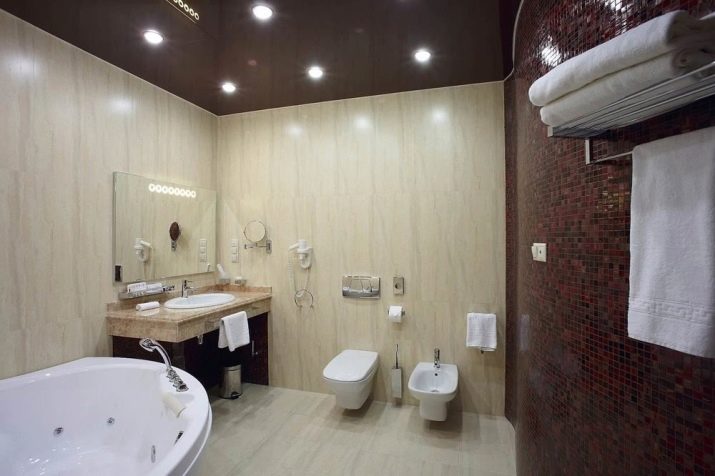
- maintain a uniform design of the room;

- they divide the premises into zones: a bathroom (where the light is soft for relaxation) and a washbasin (where the light is bright).

The basic requirement for all luminaires installed in wet rooms is security. Products suitable for use in humid environments are marked with IP, where I is dust protection and P is moisture protection.
In humid rooms, the body of ceiling lamps must be sealed, and the IP index must be at least 67.
Mark the luminaire on the body or packaging of the device... Sometimes the index consists of three digits, where the third indicates the impact resistance of the product, but for operation on the ceiling, this indicator does not matter.


Views
Traditional fixtures used to be hung from the ceiling and connected to a single switch. They were replaced by decorative lighting, which is installed on all planes and connected to different power sources. Lamps are selected for the interior according to their purpose.
The luminaires are presented in different models.
- Universal point they are mounted in stretch fabrics and are placed in rooms of different heights. They are intended for a light accent of a certain area of space.
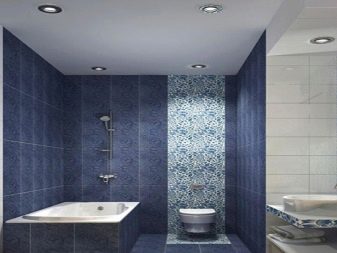
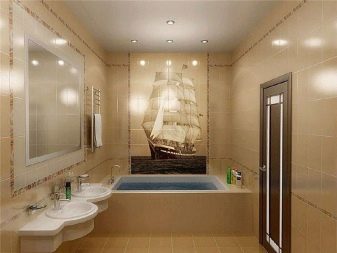
- Embedded models are installed during the installation of the ceiling and often serve as the main lighting. They focus on the illuminated area of the room and are hidden in the ceiling panel or protruding.

- Protruding from the ceiling illuminate not only the area of the room, but also the suspended structure itself. This makes the lighting brighter by reflecting off the plane of the ceiling.
Recessed ones look better, but they give less light, directing all the light vertically down and illuminating only the space below them. There are models that allow you to change the angle of rotation of the spot.

They are installed with a spring placed in a pre-cut hole. The spring is stretched, and the canvas presses the lamp to the ceiling, therefore, a gap of 7 cm is left between the stationary and the stretched canvas.
When installing surface-mounted luminaires, use adjustable racks... In the marked places, thermal rings are planted on the glue, which are then hidden under the side of the lamp. They also fix the lamp body and prevent the web from heating. There are rotary models to control the direction of light.



These lamps include good old shades, called tablets, which have changed slightly. They can have either a glass surface or a plastic one. They are suitable for all types of lamps, they diffuse light well without losing it along the path of fall.
Hanging lamps are hung in spacious rooms. They do not spoil the canvas because they are at a safe distance from it. The chandelier should not weigh much, and the shades should look at the floor. This will help to avoid heat and glare on the gloss of the canvas.



All suspended models are only hung on a fixed ceiling using a sturdy reinforcement hook. At the same time, decorative elements are visible - chains, cables or rods 20-150 cm long, and the mechanism itself hides the canvas.
Chandeliers are eye-catching in color and decoration and come in modular, independent, revolving and stationary. Various materials are used for the manufacture of the case: metal, plastic, glass and wood. Fancy-shaped plafonds are produced in the form of various interesting compositions. When using them, ensure good ventilation and place away from water. Today there are chandeliers of the classic style with a degree of protection IP 65, which are installed both in the hammam baths and in the pool.



Raster luminaires are modular equipment of the fluorescent type. Such metal cells with a reflective grille are installed on the upper floor. Emit stray light and reflect it, adding volume. The V-shaped grille protects the fluorescent tubes from falling out.



The most effective is the LED strip located along the contour of the space. This is a flexible mounting tape with LED bulbs and resistors that follow all the curves of the object. Her light is not directed, but diffused. They are often used as garlands. The illuminated object appears to be floating in the air. They are glued to the ceiling, using as decorative lighting. When used, they remain cold all the time, so they are absolutely safe for all types of canvases.
The power of the circuit depends on the number of LEDs attached to it. They are available with moisture protection and ordinary. The contour is composed of multi-colored crystals, and the degree of luminescence is also regulated.



Each type of luminaire requires the lamps specified in the instruction manual.
Incandescent lamps more powerful than 45-60 W are not suitable for ceiling paintings. For halogen lamps, an additional transformer must be installed, and the permissible power is within 35 watts.
There are several types of light bulbs that can be used in lighting fixtures.
- Incandescent lamps inserted into chandeliers installed in a stationary ceiling, and the gap between it and the canvas is within 40 centimeters. Although they produce stray light, they consume a lot of electricity and are therefore not economically viable.


- Halogen lamps they consume less electricity than the previous model and have a long service life. They are used both for point lighting and for general lighting. This is an advanced incandescent lamp, inside is a buffer gas, halogen bromine iodine vapor, which increases the life of the filament. It is recommended to use them with protective glass. They emit bright light well, but the color range is scarce.


- LED bulbs are the most environmentally friendly and safe choice. Manufacturers give them a 10-year warranty. They produce comfortable light, are not subject to flicker and are available in different shades of light.
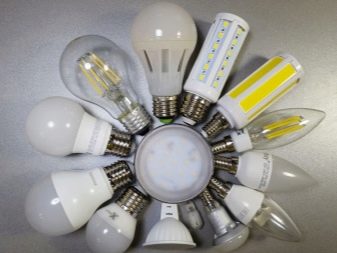

- Luminescent they serve for a long time, are economical to use, produce diffused light, pleasing to the eye, consume little electricity. They do not heat up during use and do not light up. The disadvantage is the long power build-up. They are mounted to a suspended canvas in a frame designed for them.


- Fiber optic filaments. Frequent visitor to the ceiling paintings. They have low heat dissipation and the amount of light, therefore they are often used as a beautiful backlight.
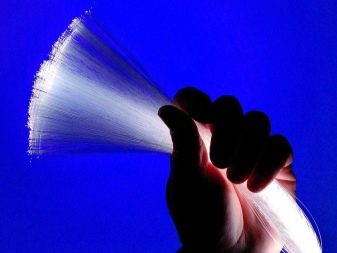

Dimensions (edit)
Ceiling lamps of various sizes can be found today. Surface-mounted luminaires are available in different shapes: cube, hemisphere or full-fledged ball. The diameter varies from 5 to 15 cm. They are installed at the rate of one device per 4 m².



For built-in equipment, miniature lamps are preferred, not too noticeable at first glance, but giving a lot of light.
All of them have standard diameter sizes, but are subdivided into the following types:
- point diode - 77 mm, and mortise - 5.2 cm;
- halogen spot - 110 mm, but there is no hard standard;
- model, in which ordinary incandescent lamps are inserted - 8 cm.




Base type Gu5.3 with a diameter of 75-88 mm, and with a pin system, the size is smaller. The screw base is available in different sizes from micro E5 to E40. In spot lamps, screw bases from micro to small E 27 are placed. In ceiling lamps, lamps with a pin base are installed.

They have a different distance between the contacts and their location - below or on the side. Most often they are used with an arrangement at the bottom, which simplifies lamp replacement.

Manufacturers overview
Fixtures for the bathroom should provide good lighting and be safe. This is what the manufacturers who produce these products think about.
- Ecola, China... Almost all offered products are sealed and waterproof. Low cost stretch cover lamps are easy to install. Allow a minimum blade gap with a stationary overlap during installation. They do not change the temperature during operation for a long period of time, maintaining the original temperature. They have low electricity consumption and a long service life. Most of all positive reviews about the built-in models GX53, MR16 and the GX70 patch.
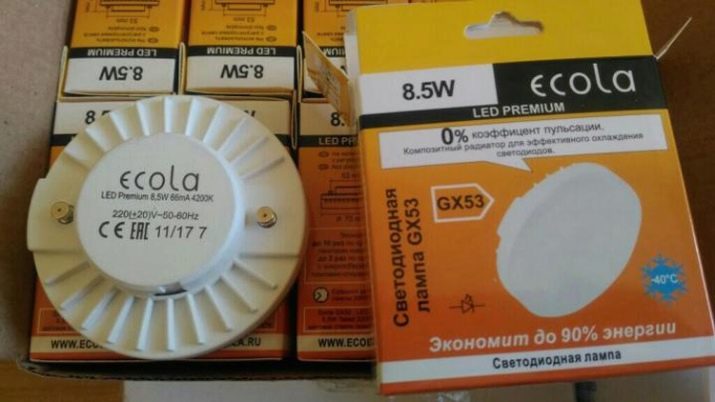
- Philips, Netherlands. After the rebranding, the luminaires are released under the Signify brand. Recognized for their reliability and versatility with stretch fabrics. They are easy to install and emit bright and comfortable light evenly distributed in the space. Made from safe raw materials. The built-in super-thin models of the Downlight series, the ceiling lamps of the ECOMODS family and the Probos spot models are in particular demand.

- Citilux, Denmark. Provide extraordinary lighting solutions.The materials used in the manufacture are moisture resistant, tolerate temperature extremes and vibration well. The entire lineup has affordable prices. Long-lasting, practical and easy to maintain. The best models are represented by remote-controlled chandeliers of the Parker range, built-in spotlights of the Alpha, Beta ranges, and the Luna overhead model.



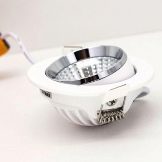
Ceiling lamps with waterproof brands are also in demand. Osram, Massive, Globo, Markslojd, Feron.
Similar moisture-proof lamps made in Russia are represented by several brands:
- Sonex (all models have a different design, which allows you to find the desired model, consonant with the design of the room);
- Velante (the equipment has a laconic design and an affordable price);
- Ambrella light (represented by the CRYSTAL SAND collection of lamps);
- Elvan (offers spot LED spotlights).




How to choose
Having made the decision to buy a ceiling lamp, you need to decide which model is right for you, taking into account the following factors.
- A variety of forms, from which you should choose the one suitable for the style of decoration. Some models are decorated with mirrored plates that reflect light, colored plastic or glass. Diffuse reflections of various configurations create a unique atmosphere of the starry sky.
- Lighting is designed based on the weight and size of the model. Sufficiently heavy lamps can provoke the sagging of the tension web, therefore, it is necessary to increase the height of the gap.
- The color scheme is presented in many shades, which helps to choose the lamp to match the color of the decor. For a variety of lighting effects, you can buy several shades at once.



It is worth taking into account the requirements for bathroom lighting:
- for bathrooms, only moisture-proof equipment with a sealed housing is acceptable;
- the ability to combine different lighting methods, for example, complement the spot lighting with a classic-style chandelier;
- built-in models must have internal sides, and the heating must not exceed 60 ° C;
- they should be 15-20 cm away from the wall;
- in plafond series, fluorescent or LED lamps are used;
- when buying a lamp, you need to find out about the method of replacing broken lamps.


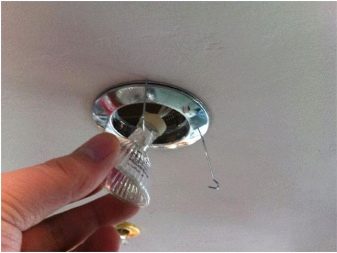

Any lighting fixture is suitable for lighting the toilet. Ceiling lighting involves the use of small chandeliers. For a small toilet, one installed in the center is enough.
Spotlights are used for suspended ceilings. They are placed over the entire area of the ceiling.


Where to install
For stationary ceilings, a chandelier is better suited, and for suspended ceilings, installation of built-in models is suitable. For low ceilings, a spotlight with adjustable direction of light would be an excellent placement option. It is necessary to take into account some of the subtleties of installing ceiling lighting:
- it should be distributed evenly over the entire area, therefore, with a large number of light sources, the power of each should be lower.
- place lamps in all active zones of the room;
- light is directed at an angle, not perpendicular to reflective surfaces;
- it is better to illuminate the mirror from the sides or from above and from the sides, so as not to distort the reflection.
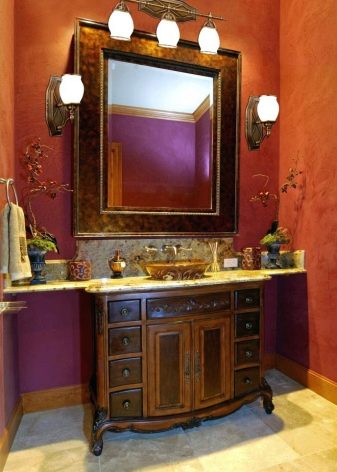

Examples in the interior
Light helps to enhance the interior of the bathroom by focusing on particularly successful design finds. Various principles of luminaire arrangement are applied.
- They are placed around the entire perimeter of the bathroom, reducing the functional load on the central shade and dynamically distributing light.

- Position them correctly relative to the wall mirrors. The one-way light directed at the face creates a discomfort, so it is best to place the lamps in a contour, which creates a cross-light effect.


- In a spacious room, it is recommended to use pendant lights.They will add even more volume, especially when grouped into several pairs of light elements, forming a single figure.
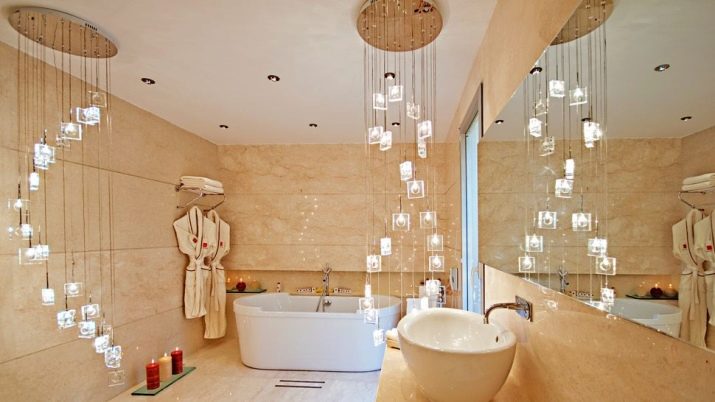
- To add sophistication to the interior, you can place LED strips on the ceiling or under the sides of the bathroom.


Ceiling lights are often the only light source, so they must be chosen based on their design features and characteristics, taking into account their consonance with the design of the bathroom.
You can watch the video below on how to make the right lighting in the bathroom.








